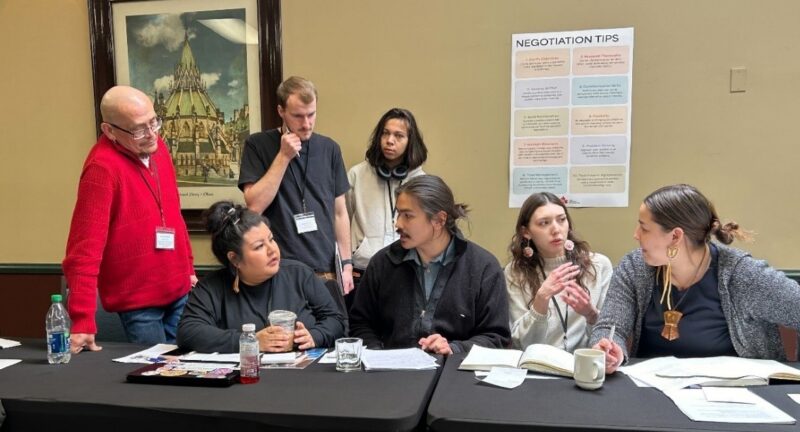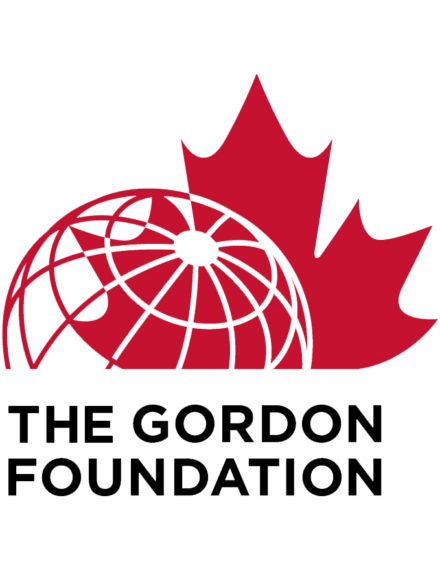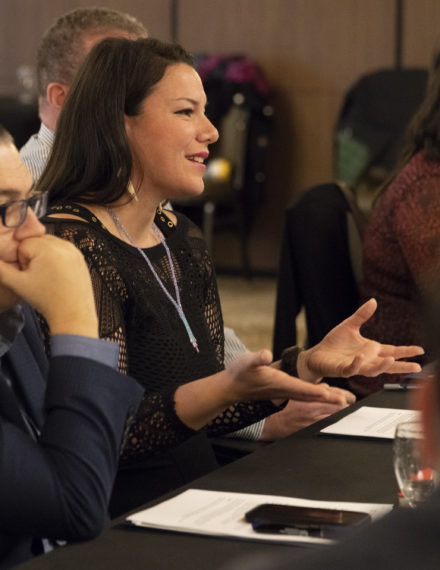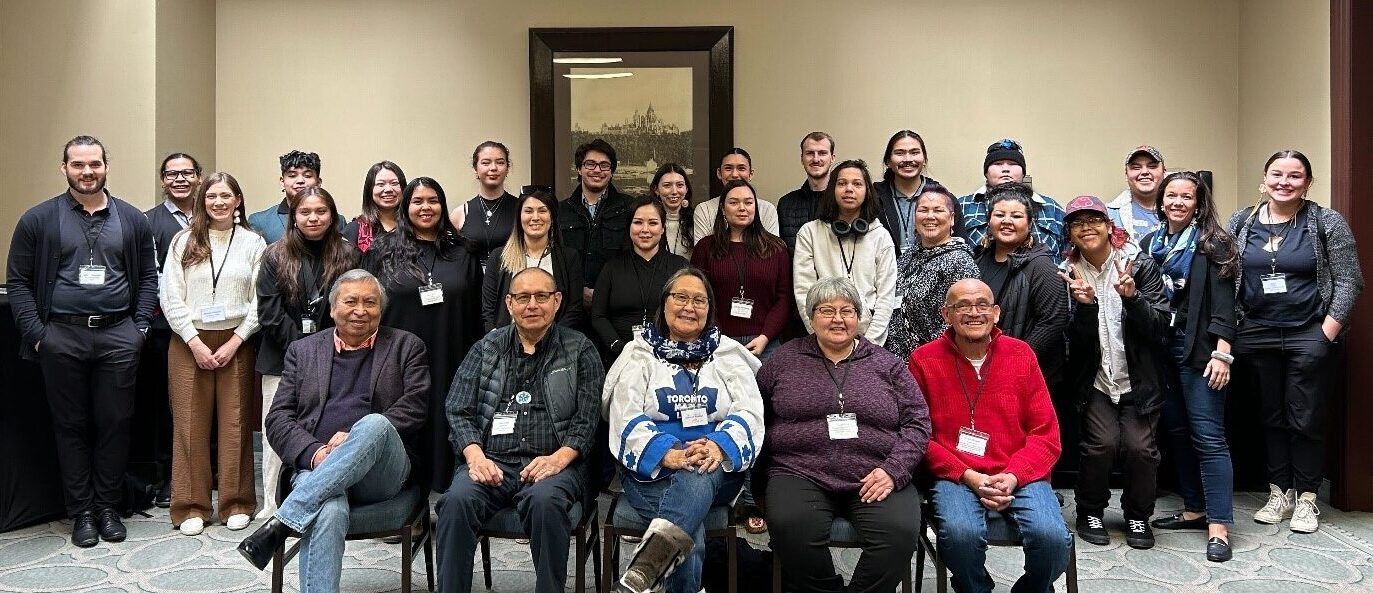
On a cold February day in Ottawa, in collaboration with the Land Claims Agreements Coalition (LCAC), 18 emerging Indigenous leaders came together at the 6th National Treaty Simulation. The young leaders from 13 different communities were united in a shared mission to learn from Elders and advisors about how to negotiate and implement Modern Treaties.
Modern Treaties can be complex, making events like these the perfect space for Indigenous youth to ask questions from expert advisors and learn from practical exercises. A Treaty Simulation is an immersive experience that puts emerging Indigenous leaders in the shoes of treaty negotiators and those working in treaty implementation.
Participants at the National Treaty Simulation learning from advisor Frank Dragon.
At the National Simulation, participants took on fictionalized roles to learn what it takes to negotiate and come to a consensus when each group has a different point of view. The participants were split into three teams, representing the parties in the negotiation scenario: a fictional First Nation, Yukon Government, and Government of Canada.
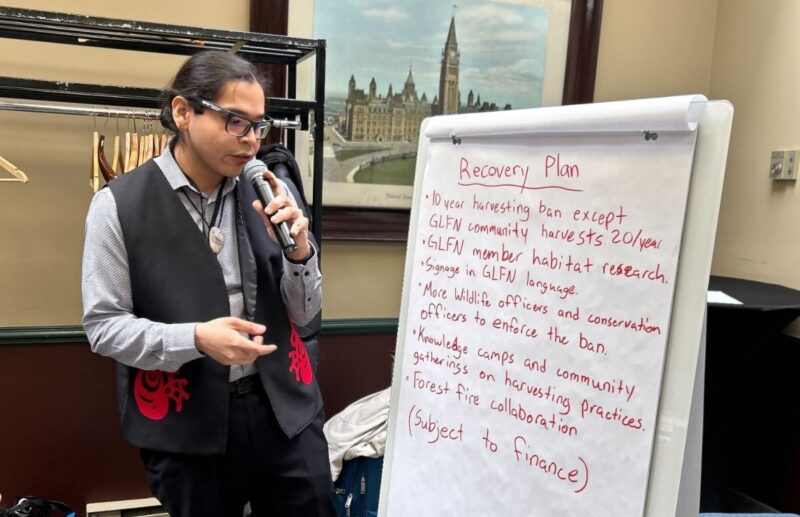
Youth Co-Facilitator, Patrick Guno, helping teams review their consensus points at the National Treaty Simulation.
The focus of this year’s negotiation was creating a fictional wildlife recovery plan. Each team received a mandate letter from their government, outlining what they wanted to see in the recovery plan. Teams developed their proposals, then met at the negotiation table to negotiate until consensus was reached on as many points as possible.
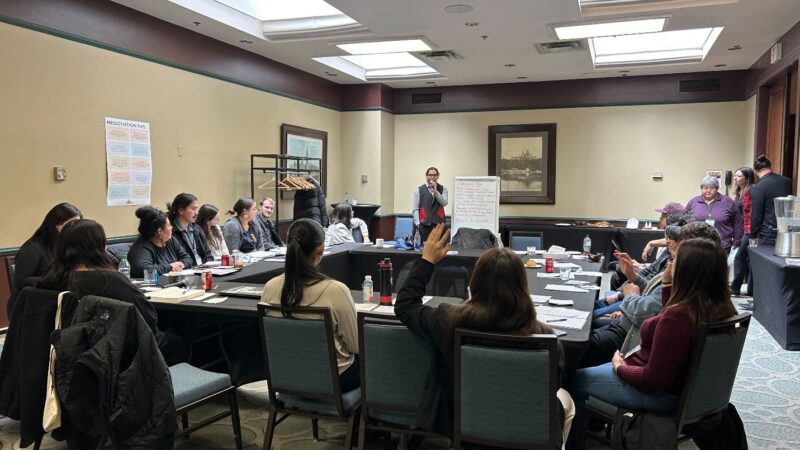
Participants at the 6th National Treaty Simulation negotiate a fictional Wildlife Recovery Plan.
The event was an opportunity for participants to build knowledge, skills, and relationships. The participants also connected with experienced advisors who work or have worked in treaty negotiation or implementation.
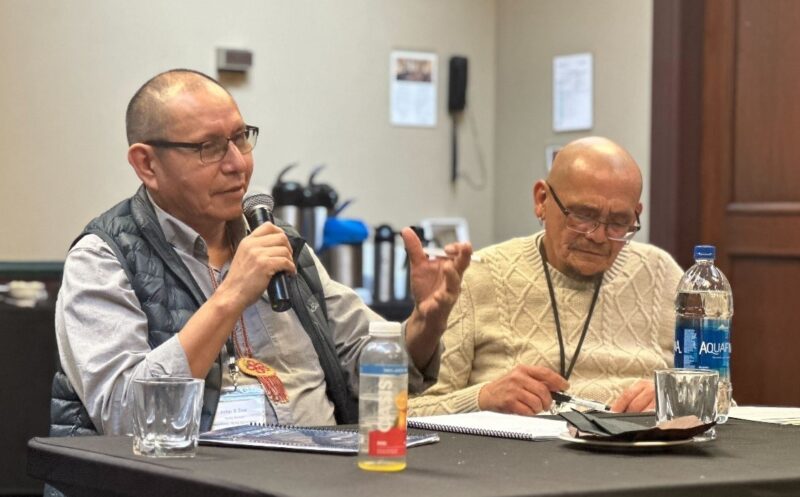
Advisors Dr. John B Zoe and Frank Dragon teaching Indigenous youth about treaty negotiation and implementation.
The advisors included Dave Joe (Negotiator, Yukon Umbrella Agreement), Frank Dragon (Negotiator, Ka:’yu:’k’t’h’/Che:k’tles7et’h’ First Nations Financial Fiscal Agreement, Maanulth Final Agreement), Dr. John B Zoe (Negotiator, Tłı̨chǫ Agreement), and Lisa Hutton (Manager, Implementation and Negotiations, CIRNA Yukon Region).
The event was also supported by Inuk Elder, Meeka Kakudluk, who opened each day by lighting the traditional Inuit oil lamp, called a qulliq, and sharing stories about her life and traditions. Participants also heard from guest speakers Associate Deputy Minister Rob Wright and Director General Jake Kennedy of Crown-Indigenous Relations and Northern Affairs Canada. Traditionally, for Inuit the qulliq was not only the main source of light during the winter months but was also used to cook, melt ice, and dry clothing over. It allowed Inuit to survive in a cold, harsh environment. Today, the qulliq also serves a ceremonial purpose, symbolizing tradition and the strength of Inuit women, who traditionally tended to the qulliq.

Inuk Elder Meeka Kakudluk, who opened each day by lighting the traditional Inuit oil lamp, called a qulliq, and sharing stories about her life and traditions.
The event was a fantastic opportunity for youth to build knowledge, skills, and relationships. Treaties are a significant part of our history, present and future, and learning about them is a key part of the Truth and Reconciliation Commission of Canada: Calls to Action.
The Gordon Foundation has been delivering Treaty Simulations in collaboration with communities, organizations, schools, governments, and treaty experts since 2019. Watch the animated Treaty Simulation Explainer video to see how it all comes together.
The Gordon Foundation would like to thank the Land Claims Agreements Coalition (LCAC) and NVision for their partnership on this event.
